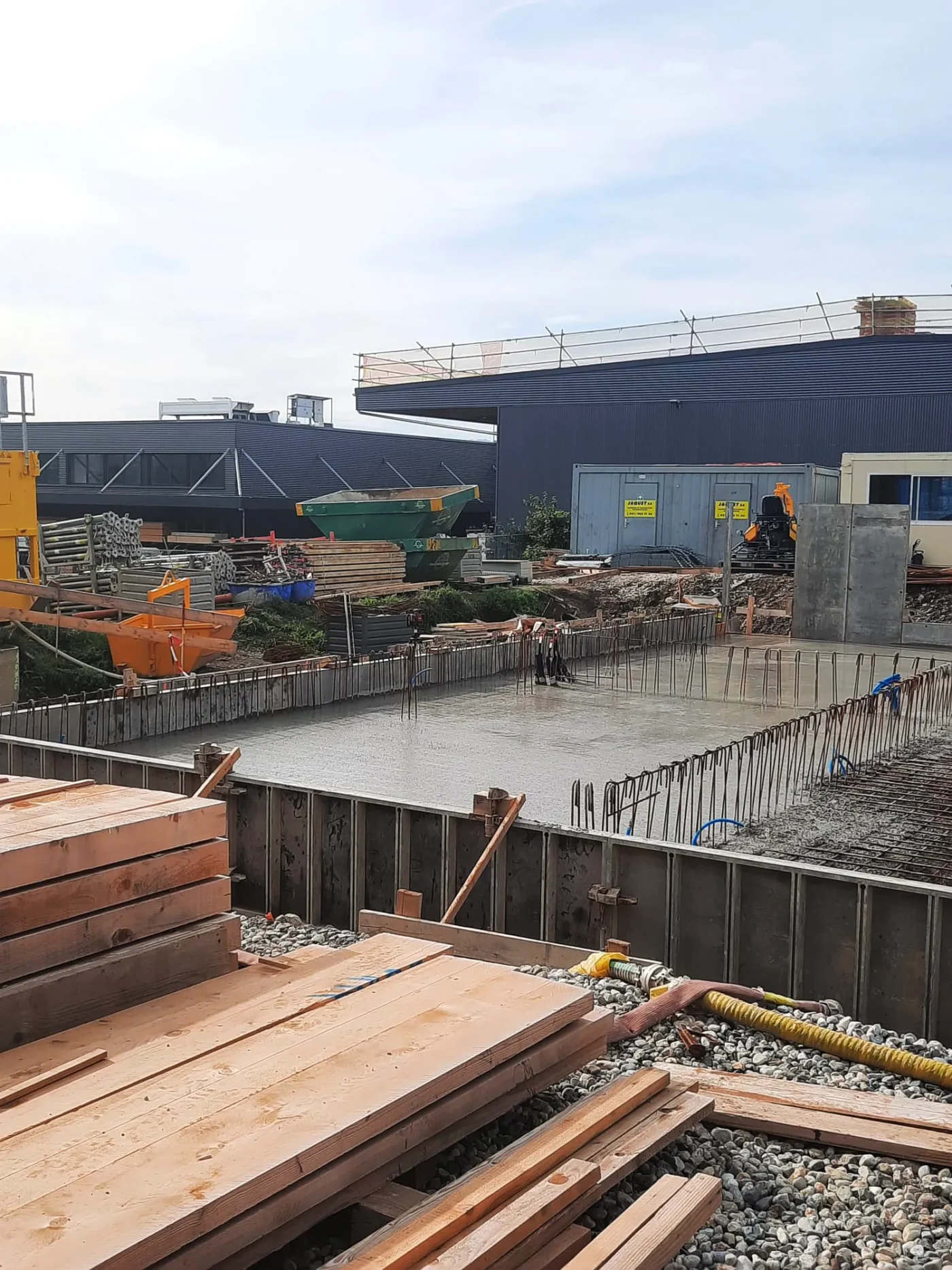The foundation slab is an essential base for any building, providing a stable and durable foundation. In Échandens, as elsewhere, preparing the slab is a meticulous process that requires careful planning and precise execution. Here are the crucial steps leading to the pouring of the slab.
Soil Study and Geotechnical Analysis
First and foremost, a soil study must be conducted to understand the nature of the terrain. This analysis helps determine the soil’s load-bearing capacity, identify potential weak zones, and adjust plans accordingly. The data collected will guide the choice of materials and construction methods.
Design and Architectural Plans
Based on the geotechnical study, architects and engineers create detailed plans for the building and the slab. This phase includes defining dimensions, load specifications, and technical requirements. These plans must comply with the current construction standards in Échandens.
Obtaining Building Permits
Before starting work, it is essential to secure all necessary permits from local authorities. This includes approval of architectural plans and compliance with environmental regulations. In Échandens, the process may involve public consultations and reviews by various agencies.
Site Preparation
Once permits are obtained, the site must be prepared. This involves clearing the land, removing debris, and leveling the ground. Heavy machinery is often used during this step to ensure a uniform surface.
Formwork
Formwork involves creating a temporary structure to hold the concrete in place during pouring. Materials like wood or metal must be sturdy and properly installed to prevent sagging. This step is critical to achieving the correct dimensions and shape for the slab.
Reinforcement
Before pouring the concrete, steel reinforcement must be installed. This reinforcement increases the structure’s resistance to cracks and deformations. Rebar is carefully positioned according to the specifications in the plans, ensuring the slab’s durability.
Quality Control
Before pouring, quality checks are conducted. This includes verifying the positioning of the reinforcement, the integrity of the formwork, and the absence of debris in the pouring area. These checks ensure everything is in order before proceeding.
Pouring the Concrete
Finally, the long-awaited phase: pouring the concrete. The concrete is poured into the formwork, ensuring even distribution to avoid air bubbles and achieve a smooth surface. This process must be carried out in dry and favorable conditions to ensure optimal curing.
Finishing and Curing the Concrete
After pouring, it’s crucial to finish the surface and implement curing measures. This involves keeping the concrete moist for several days to ensure even hardening and prevent cracks. This step guarantees the slab’s strength and durability.
Removing the Formwork
Once the concrete has reached the desired strength, the formwork can be dismantled. This step requires careful handling to avoid damaging the newly poured slab.
From soil study to finishing, each phase plays a crucial role in the building’s strength and durability. Following these steps diligently ensures a solid foundation ready to support future constructions.

